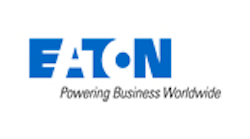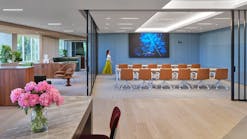Strategies in Light renovates SSL business model, smart building proposition (MAGAZINE)
The strategic roadmap for business needs to be updated periodically — and sometimes completely rerouted. That task also applies to conference planning, especially when circumstances change greatly in the span of one year. The Strategies in Light event is no exception, and its planning timeline is important to the overall theme and architecture of the 2021 conference.
As LEDs Magazine and its Strategies in Light conference team announced this past July, an initial move of the annual conference from its usual February slot to June 2021 was planned as public health guidelines looked ahead to getting back to in-person events. With continued restraints on travel from many areas due to the pandemic, the conference was slated for August. Ultimately, the team decided that the optimal way to reach as many attendees as possible was to shift the conference to a virtual event on Aug. 24–25, 2021.
Regardless of the forum, the editorial and event team views this 2021 event as a refinement of previous conferences. It continues to connect all professionals in the design and supply chain to the high-quality product- and business-development information they require. What follows is not a full discourse on each speaker or session summary in the Strategies in Light program. It is intended to provide a 360° perspective on themes, trends, and directions for the future of the LED and solid-state lighting (SSL) community.
State of the industry
At past conferences, the annual Strategies Unlimited packaged LED market analysis and forecast has been the cornerstone upon which the program was built. However, the market dynamics of all aspects of the LED and SSL supply and design chain have been disrupted by economic, political, and public health events of the past 18+ months. This year, Strategies in Light conference co-chairs Robert Steele and Clifton Stanley Lemon will deliver a Day 1 keynote, to bring context to the following:
- Impacts of the past year’s events on market supply and demand
- Pivot points the industry has used to stabilize business over the past year, if not increase profitability
- How the application landscape is gradually evolving to recognize real value in the Internet of Things (IoT) as connected lighting makes important contributions to the emergence of smart buildings
- Recognition of the role of climate change, equity, and environmental stewardship in driving market opportunities for lighting and building systems
Lemon said this year’s program is designed specifically to address “big picture issues as well as fundamental technology and applications.” The program dives into updates on the current state of the LED and SSL industries, looking at component and luminaire market research; regulations and policies driving new business strategies and opportunities in the lighting sector; and the potential of a transformed logistics model for streamlining the supply chain.
Subsequent sessions deliver application-specific panels and presentations on integrative lighting and how to achieve healthy lighting in the built environment; germicidal ultraviolet (UV) product development and current research; standards, best practices, and design guidelines for delivering quality light via tested and certified SSL products; redefining the smart building infrastructure and application; and prospects for additive manufacturing (also known as 3-D printing) in SSL product development and fabrication; and much more.
Reimagine the lighting business & manufacturing model
Some readers may recall that the LEDs Magazine virtual event “Renaissance of light quality: SSL industry swaps focus from efficiency to architecture” this past September touched on the need for business innovation and an overhaul of conventional manufacturing and design processes, outlined for a panel led by Innovative Lighting Consultants CEO Michael Kershner. A proponent of “the transformative nature of better experience that the customer will choose,” Kershner claims that the lighting industry’s largest obstacles are its lack of streamlining and its resistance to the availability of software and automation capabilities that can improve design and manufacturing processes for lighting in the same way they have done in the automotive sector. While Kershner will stand alone at the virtual podium this time, he means to break through common objections to greater reliance upon software tools — cost, complexity, skillset, and customer touch points — and instead look toward integration, efficiency, and greater profitability.
Kershner’s comments reported from the prior LEDs Magazine virtual event pair well with the session focused on Additive Manufacturing for Lighting. Three years have passed since LEDs first devoted space to the additive manufacturing inquiries taking place at Rensselaer Polytechnic Institute’s Lighting Research Center (LRC) under longtime researcher Nadarajah Narendran, and he continues to bring new lessons learned to the audience in 2021.
You might ask whether the materials and technology have moved the needle since our first delving into the R&D under academia. The answer is yes. If you didn’t attend the US Department of Energy Lighting R&D Workshop earlier in 2021, then you will find it slightly surprising that big commercial names Signify and Eaton are in the mix for presenting on this topic as well as Narendran. Speaker John Trublowski’s work in additive manufacturing was performed under a DOE-funded collaboration between Eaton Corp., the LRC, and Xerox Corp. At the DOE Workshop, he summarized and built a solid case for what he called “a fully integrated manufacturing approach” to luminaire construction.
Signify’s Matthew Wall is prepared to show that sustainability goals are more attainable now than ever, when luminaire development is enabled by additive manufacturing. Using a 100% recyclable polycarbonate, Signify says it has realized a more flexible design process for customized luminaires while achieving a 47% lower carbon footprint with the manufacture of 3-D printed SSL products. Moreover, a more robust recycling and repurposing chain leveraged by the SSL industry could, over time, assuage concerns over waste for end-of-life products, while exciting the market with more ingenuity via novel materials that prove electronic products can go greener and perform beyond expectations. Materials research can be expected to continue, coaxing higher performance from 3-D printed optics, polymers, and more, but the capability will be confirmed in the here and now.
Define practical applications (and limits) of smart systems
Finally, we turn to the often-debated and long-emerging topic of smart systems and buildings. Subscribers to our newsletters may have noticed that this year we renamed a monthly topic newsletter, changing it from “Smart Lighting & IoT” to “Connected SSL & Controls.” Much of the conversation about connected and smart lighting has neglected to address sophisticated controls in a networked system (including sensors, intelligent drivers/power supplies, gateways, and more). So the LEDs team decided that it was time to make clearer the connection (no pun intended) bringing greater intelligence to lighting through controls in the built environment.
Challenges to smart buildings have laid bare a fundamental resistance from the end-user base to complex controls without clear technical support; proprietary solutions that dead-end when businesses fail or merge; the added costs; and the lack of standardization surrounding the interoperability of devices and protocols. On that last point, at least, there are some standards and market transformation organizations working to clarify these issues and deliver a less-distorted view of the market and how to reach its potential.
Meanwhile, networked lighting controls (NLCs) have gained new traction with organizations such as the DesignLights Consortium (DLC) and Northwest Energy Efficiency Alliance (NEEA) partnering on a study with Energy Solutions to evaluate energy savings in commercial & industrial (C&I) buildings through NLCs. Upon conclusion of the study, the organizations reported that an average 49% energy savings could be delivered across some 200 NLC systems that were studied throughout various building types — with differing individual impacts, of course. Bringing the cost-versus-savings discussion to stakeholders should improve their perception of the bottom line, but that discussion will demand substantiated project outcomes.
As Lemon wrote recently, “Integrated building controls — where lighting, HVAC, and other systems work together to optimize building performance — are essential to building an equitable, resilient, decarbonized power infrastructure and meeting the challenges of climate change.” The massive construction boom due to urbanization and C&I expansion over generations has not addressed the ever-increasing load on environmental and power resources, but the architecture, lighting, and construction sectors have been looking for ways to manage those demands for a more balanced future.
Regulation and policy might seem like an odd topic to place alongside the smart building value proposition, but it’s actually a driving factor in resolving the practical resiliency concerns that Lemon raised. In particular, California’s Building Energy Efficiency Standards (Title 24 Part 6) are undergoing review and updates for the 2022 code cycle, and a panel at Strategies in Light will explore how these Title 24 changes will likely impact North American lighting requirements and overall building efficiency, and ways to prepare for this in project planning. Code compliance specialists from the California Energy Alliance, Leviton, Legrand’s Wattstopper unit, and commercial building industry consultancy Prasino Energy will tie in the role of lighting in grid modernization as well. This session should build on the prior day’s panel discussion addressing the practical missing links for smart buildings to become fully fledged “grid citizens” — not only consuming energy from the grid but producing, storing, and returning energy resources back to the grid. Lemon will moderate the panel “Smart Buildings: Lighting and Transformation at the Grid Edge” with speakers from Lawrence Berkeley National Laboratory, Pacific Northwest National Laboratory, Carrier Corporation, and RBCG Consulting.
Join us online
The intersection of market analysis, insights on an outgrown business model, new technologies to integrate into the built environment, and the need to evolve infrastructure has never been more critical to the LED and SSL supply and design chain. While global resources, energy demands, economic and political forces, and public health have made their mark on our sectors, Strategies in Light will continue to provide a learning environment that supports the connections and common goals of the entire end-to-end lighting network. Register now at www.strategiesinlight.com to experience all the benefits that the virtual Strategies in Light conference has to offer, beyond live two-day sessions — AIA Continuing Education Units (CEUs); access to the Executive Edition of the 2021 Smart Buildings Technology Trends & Usage Benchmark study; Quick Chats and product demonstrations from industry suppliers; monthly continuing education webinars in the fall; 60 days of on-demand access; and a discount to attend the in-person Strategies in Light event in 2022. And for the first time, the registration fee for this event will cover admittance to the annual Sapphire Awards ceremony, which will take place at the conclusion of Day 1 of the virtual event. Learn more about the 2021 Sapphire Awards in our finalists announcement.
On behalf of the entire LEDs Magazine and Strategies in Light organization, we look forward to interacting with you in the audience and gaining new perspectives to inform the coming year’s content and activities.
Gain insights from inside the conference
Strategies in Light conference co-chair Clifton Stanley Lemon has developed a number of articles to provide perspective regarding highdemand topics on the program for 2021. Keep an eye on his author page at our website to see more published content before the live virtual event kicks off in August.
Enjoyed this article? Visit our digital magazine for more like this >>

Carrie Meadows | Editor-in-Chief, LEDs Magazine
Carrie Meadows has more than 20 years of experience in the publishing and media industry. She worked with the PennWell Technology Group for more than 17 years, having been part of the editorial staff at Solid State Technology, Microlithography World, Lightwave, Portable Design, CleanRooms, Laser Focus World, and Vision Systems Design before the group was acquired by current parent company Endeavor Business Media.
Meadows has received finalist recognition for LEDs Magazine in the FOLIO Eddie Awards, and has volunteered as a judge on several B2B editorial awards committees. She received a BA in English literature from Saint Anselm College, and earned thesis honors in the college's Geisel Library. Without the patience to sit down and write a book of her own, she has gladly undertaken the role of editor for the writings of friends and family.
Meadows enjoys living in the beautiful but sometimes unpredictable four seasons of the New England region, volunteering with an animal shelter, reading (of course), and walking with friends and extended "dog family" in her spare time.







